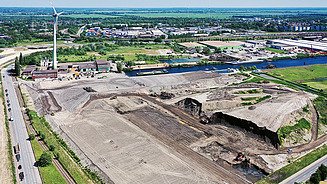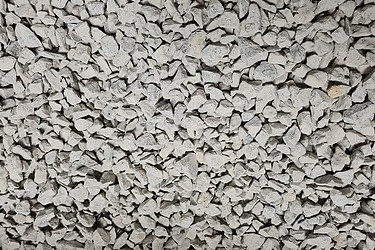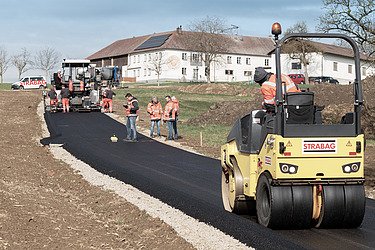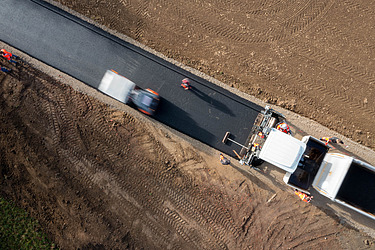Building material recycling

At STRABAG, we want to promote and optimize the reprocessing and recovery of building materials at all levels. The systematic separation, sorting and recycling of mineral construction waste such as building rubble and road demolition waste into high-quality secondary raw materials is a crucial building block for entering the resource-conserving circular construction of the future.
Which building materials can be recycled?
The huge potential of comprehensive and consistent construction material recycling is evident from the immense volume of construction waste generated every year, for example in Germany: at around 222 million tons(2021, Federal Statistical Office), concrete demolition, asphalt demolition, excavated earth and other construction waste such as tiles, bricks and ceramics represent the largest waste stream in Germany. We need to see this mineral construction waste as a raw material store and process it for reuse in the construction cycle. We need systematic urban mining as the basis for the sustainable building materials of the future.
- At STRABAG, we are committed to keeping demolition materials in the construction materials cycle in as consistent a quality as possible. Example: processed concrete rubble is used as the basis for recycled concrete (R-concrete), in short: concrete remains concrete - and does not become a base layer in road construction (downcycling). STRABAG is implementing building construction pilot projects with recycled concrete and is committed to ensuring that the wide range of applications for this resource-saving material is also reflected in national regulations and standards.
- Asphalt recycling saves primary raw materials such as rock and petroleum-based bitumen. However, regional differences in regulations prevent the full potential from being realized - we are therefore campaigning for higher and uniform national recycling rates for all asphalt layers.
- As the general contractor for a major highway project in Germany (expansion of the A8 Enztal crossing), STRABAG has also developed a comprehensive recycling concept for the excavated earth, which makes it possible to recycle almost 100 percent of the large quantities of excavated material regionally - a pilot project that could set a precedent.
Closed material cycles with building material recycling
The use of high-quality processed secondary resources relieves the burden on landfills and sustainably conserves the limited primary raw material deposits from quarries, sand and gravel pits. The use of recycled building materials also has the potential to reduce CO2 emissions in the construction process: this is particularly true when processing and reuse on the construction site take place in regional proximity to each other and material transportation over long distances is avoided.

STRABAG is following this approach with its first Circular Construction & Technology Center (C3) The urban mining pilot project in Bremen is intended to recycle construction waste from the local area into high-quality construction raw materials and thus establish a closed material cycle for the regional construction industry.


